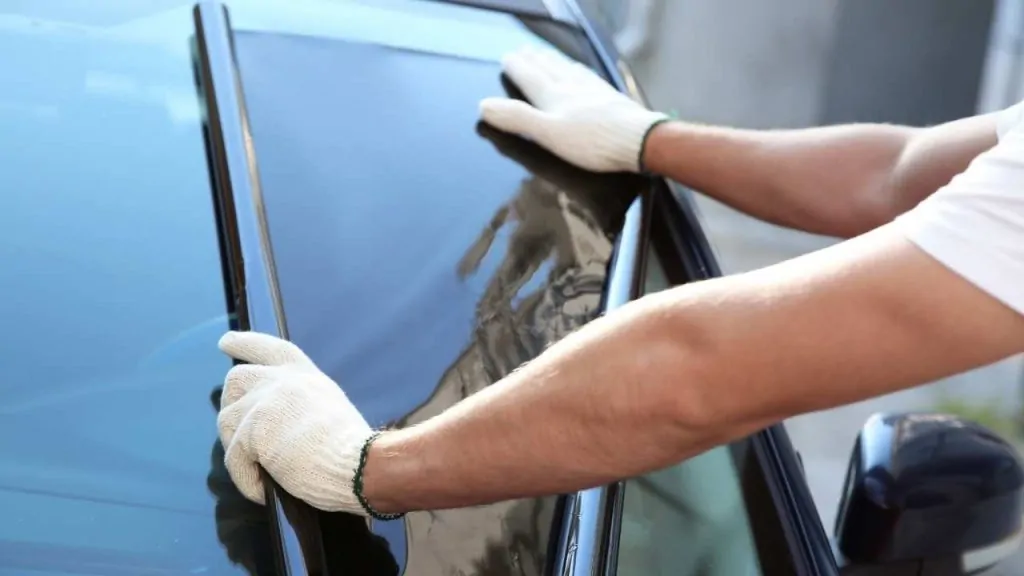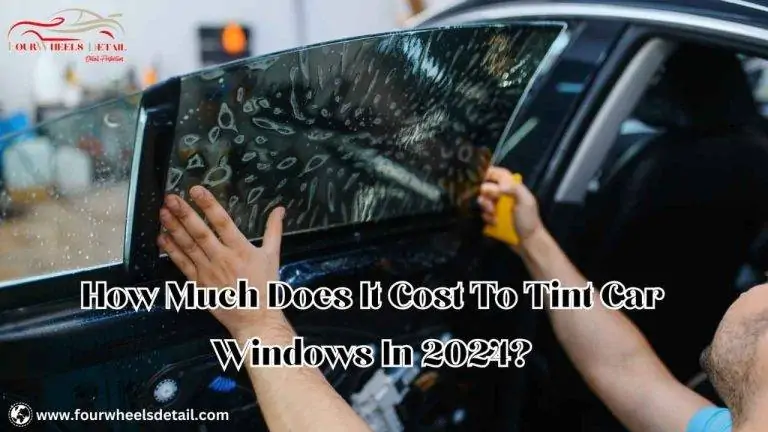Discover how much does it cost to tint car windows? ranging from $100 to $800 based on tint type and vehicle size. Enjoy benefits like UV protection, heat reduction, and enhanced privacy with professionally applied tints. Want to elevate your driving experience while protecting your car’s interior? Dive into our article for more insights and tips.
Table of Contents
ToggleFactors Affecting Car Window Tinting Costs
1. Car Type:
Compact, Sedan, SUV, and Truck: Larger vehicles typically incur higher costs due to more and larger windows, which require additional material and time to tint.
2. Tint Type:
Standard Film: An economical choice, often between $100 to $400.
Ceramic Tint: High-quality with excellent UV protection, costing around $400 to $800.
Carbon Tint: Durable and fade-resistant, averaging $250 to $500.
High-End Films (e.g., Crystalline): Premium heat and UV protection, typically $800 to $1,200 or more.
3. Window Size and Type:
Side Windows vs. Rear Windows vs. Windshield: Each window type impacts cost, with rear windshields often being pricier due to size and shape.
4. Location and Installer Quality:
Regional Price Differences: Urban areas may have higher rates, while smaller towns may offer lower prices.
Installer Experience: Quality installers may charge more but ensure a lasting, quality finish.
5. Additional Services:
Old Tint Removal: If replacing old tint, removal can add $50 to $100.
Custom Cutting or Design: Adds a unique look but may increase costs by $50–$200 depending on complexity.
Average Cost of Car Window Tinting in 2024

- Cost Table by Car Type and Tint Type:
| Car Type | Ceramic Tint | Dyed Tint | Hybrid Tint |
|---|---|---|---|
| Compact | $200-$300 | $150-$200 | $175-$250 |
| Sedan | $250-$350 | $200-$250 | $225-$300 |
| SUV | $300-$400 | $250-$300 | $275-$350 |
| Truck | $350-$450 | $300-$350 | $325-$400 |
- Explanation: Point out general trends, such as ceramic tints being pricier due to durability and heat rejection capabilities, while dyed tints are more affordable.
Cost Breakdown by Vehicle Type
Sedans:
- Standard Film: $100 – $300
- Ceramic Film: $400 – $700
SUVs and Trucks:
- Standard Film: $200 – $400
- Ceramic Film: $500 – $800
Coupes and Compact Cars:
- Standard Film: $80 – $250
- Ceramic Film: $300 – $600
Benefits of Car Window Tinting
- Temperature Control: Reduces interior heat, leading to energy savings by lessening air conditioning use.
- UV Protection: Shields passengers from harmful UV rays and protects interior surfaces from fading.
- Privacy and Security: Limits visibility from outside, offering privacy and deterring potential break-ins.
Drawbacks and Considerations
- Initial Cost vs. Long-Term Benefits: The upfront cost may be high, but the long-term comfort and interior protection often make it worthwhile.
- State-Specific Legal Requirements: Emphasize the importance of understanding local regulations on tint darkness to avoid fines and ensure compliance.
Tips for Choosing the Right Car Window Tint
- Consider Needs: Think about UV protection, privacy, and aesthetic preferences.
- Research Local Installers: Check online reviews for quality and durability.
- Get Multiple Quotes: Helps ensure you’re getting fair pricing and quality.
- Check Legal Restrictions: Prevents costly removal or fines.
Frequently Asked Questions (FAQs)
How long does window tinting last?
Car window tinting can last anywhere from 5 to 10 years depending on the tint quality, installation quality, and how well it is maintained. Higher-end tints like ceramic or carbon generally last longer than dyed tints, which may start fading or peeling after a few years. Quality installation and regular cleaning with non-abrasive products can help extend the life of the tint.
Can tinted windows be removed or replaced?
Yes, tinted windows can be removed or replaced. Removal generally involves a heat source and adhesive remover to take off the film without damaging the glass. While it can be done at home, professional removal is often recommended, especially for older or stubborn tints, as professionals have the right tools to avoid scratching the glass. After removal, new tint can be applied without issues.
Does window tinting affect visibility at night?
Tinting can reduce visibility at night, particularly with darker shades. Standard regulations restrict darkness levels for safety, as darker tints make it harder to see through the windows when there’s low light. Lighter tints, or tints with lower Visible Light Transmission (VLT) percentages, help balance visibility with UV protection, minimizing the night visibility issue.
Is there a difference in tint effectiveness by brand?
Yes, tint effectiveness can vary significantly by brand. Premium brands often offer better UV protection, heat reduction, and longer-lasting materials. For example, brands like 3M and Llumar are known for high-quality ceramic and carbon tints that maintain performance over time. Cheaper brands may be less effective in blocking UV rays and heat and could fade or bubble sooner.
Are there limits on tint darkness in my area?
Yes, most states and regions have legal limits on how dark tints can be, especially on front side windows and the windshield. These regulations are generally in place to ensure driver visibility and safety. It’s best to check local laws to avoid fines, as each area may have different requirements for visible light transmission (VLT) percentage.
If you want to learn more about car cleaning and detailing, you can look more on our website fourwheelsdetail.com

Hi! I’m Harry, With over a decade of experience in car detailing and cleaning, I specialize in restoring vehicles to their pristine best. Passionate about sharing expert tips on fourwheelsdetail.com, I’m here to help readers maintain their cars’ beauty, from paint protection to tackling tough stains.

